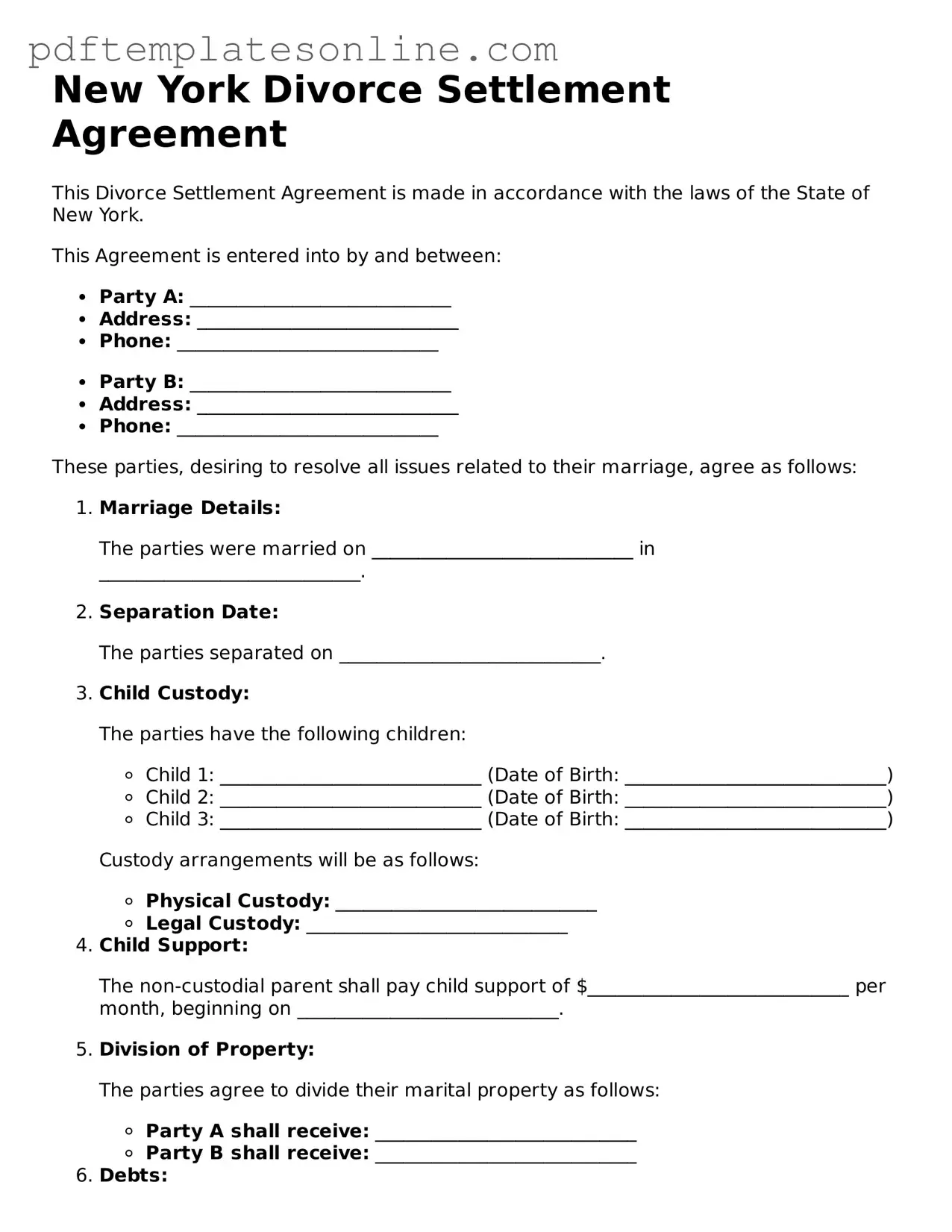Filling out the New York Divorce Settlement Agreement form can be a daunting task. Many individuals make critical mistakes that can lead to complications down the line. One common error is failing to provide complete and accurate information. Incomplete forms can delay the process and may even result in the court rejecting the agreement.
Another frequent mistake is neglecting to address all assets and debts. It is essential to list both marital property and liabilities comprehensively. Omitting significant assets or debts can lead to disputes later, as one party may claim they were unaware of certain financial obligations or properties.
People often overlook the importance of detailing child custody arrangements. When parents do not specify custody terms, it can create confusion and conflict in the future. Clearly outlining visitation schedules and decision-making responsibilities is crucial for the well-being of the children involved.
Many individuals also fail to consider tax implications related to asset division. Misunderstanding how property division affects taxes can lead to unexpected financial burdens. Consulting with a financial advisor or attorney can help clarify these issues before finalizing the agreement.
Another mistake is not accounting for future changes in circumstances. Life events such as job loss, relocation, or changes in income can impact the viability of the agreement. Including provisions for modifications can provide necessary flexibility for both parties.
People sometimes rush through the signature process. It is vital to ensure that both parties fully understand the terms before signing. Rushing can lead to misunderstandings and regrets, which can complicate future interactions.
Additionally, many fail to keep copies of the signed agreement. Documentation is essential for reference and enforcement. Without a copy, individuals may find themselves at a disadvantage if disputes arise later.
Another common oversight is not seeking legal advice. While some may feel confident in their ability to navigate the form, the complexities of divorce law can be overwhelming. Engaging an attorney can provide clarity and protect one's interests.
Finally, individuals often underestimate the emotional impact of the process. Divorce is not just a legal procedure; it is a significant life change. Taking the time to address emotional well-being during this period is just as important as completing the paperwork accurately.
